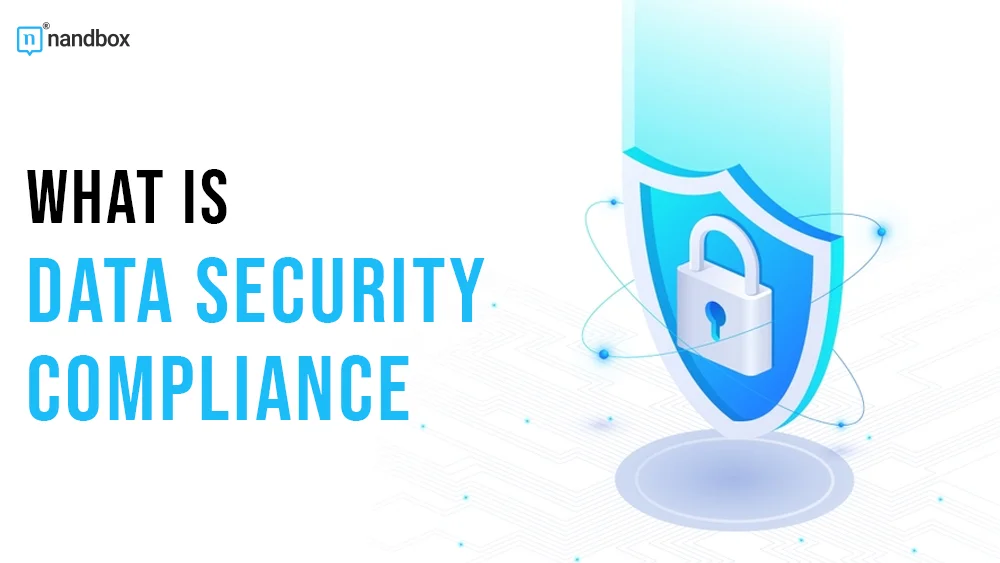As data breaches and cyber threats continue to rise, organisations must prioritise the protection of sensitive information. Data Security Compliance not only helps in safeguarding against financial losses but also in maintaining trust with customers and stakeholders. But what exactly is data security compliance, and why is it so important? This article explores more into the essentials of data security compliance, its significance, key regulations, and how organisations can achieve and maintain it.
Understanding Data Security Compliance
Data security compliance refers to the adherence to laws, regulations, and standards designed to protect sensitive information from unauthorized access, disclosure, alteration, and destruction. Also, these regulations are put in place by governmental bodies, industry groups, and other regulatory authorities to ensure that organizations handle data responsibly and securely.
The primary goal of data security compliance is to protect the confidentiality, integrity, and availability of data. Also, compliance helps organizations mitigate the risks associated with data breaches and cyberattacks, which can have severe financial and reputational consequences. Non-compliance can result in hefty fines, legal penalties, and loss of customer trust.
The Importance of Data Security Compliance
- Protecting Sensitive Information: Compliance ensures that sensitive data, such as personal information, financial records, and intellectual property, is adequately protected. This is crucial for maintaining privacy and preventing identity theft, fraud, and other malicious activities.
- Building Trust and Reputation: Customers and clients are more likely to trust organizations that demonstrate a commitment to data security. Furthermore, compliance with data security regulations shows that an organization takes the protection of personal and sensitive information seriously. Which can enhance its reputation and customer loyalty.
- Avoiding Legal and Financial Penalties: Regulatory bodies impose significant fines and penalties for non-compliance with data security laws. For instance, under the General Data Protection Regulation (GDPR) in Europe, organizations can face fines of up to €20 million or 4% of their global annual revenue. Whichever is higher. Similar penalties exist under other regulations like the California Consumer Privacy Act (CCPA) and the Health Insurance Portability and Accountability Act (HIPAA).
- Mitigating Cybersecurity Risks: Compliance frameworks often include guidelines and best practices for implementing robust security measures. Also, adhering to these standards can help organizations reduce the risk of data breaches and cyberattacks, protecting their assets and operations.
Key Data Security Regulations
Several key regulations govern data security compliance, each with its own set of requirements and standards. Here are some of the most notable ones:
- General Data Protection Regulation (GDPR): Enacted by the European Union, GDPR is one of the most comprehensive data protection regulations in the world. It applies to all organisations that process the personal data of EU residents, regardless of their location. GDPR mandates strict data protection measures. Including obtaining explicit consent for data processing, ensuring data accuracy, and providing individuals with the right to access and erase their data.
- California Consumer Privacy Act (CCPA): The CCPA grants California residents new rights regarding their personal information. It requires businesses to disclose the types of data they collect, how it is used, and with whom it is shared. Consumers also have the right to opt-out of the sale of their data and request the deletion of their personal information.
- Health Insurance Portability and Accountability Act (HIPAA): HIPAA sets the standard for protecting sensitive patient data in the healthcare industry. It requires healthcare providers, insurers, and their business associates to implement administrative, physical, and technical safeguards to ensure the confidentiality, integrity, and availability of electronic protected health information (ePHI). Given the complexity of these requirements, many organizations turn to tools like a HIPAA compliance checklist. This ensures they meet all necessary obligations. Including obtaining explicit consent for data processing, ensuring data accuracy, and providing individuals with the right to access and erase their data.
- Payment Card Industry Data Security Standard (PCI DSS): PCI DSS is a set of security standards designed to protect cardholder data. It applies to all entities that process, store, or transmit credit card information. Compliance with PCI DSS involves implementing measures such as encryption, access controls, and regular security testing.
- Sarbanes-Oxley Act (SOX): SOX is primarily focused on financial reporting and corporate governance but includes provisions related to data security. Also, it requires organizations to establish internal controls and procedures for financial reporting to reduce the risk of fraud and protect sensitive financial data.
Achieving and Maintaining Data Security Compliance
Achieving data security compliance involves a series of steps and ongoing efforts. Here are some best practices organizations can follow:
- Conduct a Risk Assessment: Begin by identifying the types of data your organization collects, processes, and stores. Moreover, assess the potential risks and vulnerabilities associated with this data. Additionally, a thorough risk assessment helps in understanding where to focus your security efforts and resources.
- Develop and Implement Policies and Procedures: Establish comprehensive data security policies and procedures that align with relevant regulations and industry standards. These should cover areas such as data classification, access controls, encryption, incident response, and employee training.
- Invest in Security Technologies: Implement advanced security technologies to protect sensitive data. This may include firewalls, intrusion detection and prevention systems, data encryption, multi-factor authentication, and regular security monitoring and audits.
- Educate and Train Employees: Employees play a crucial role in data security. Moreover, it provides regular training and awareness programs to ensure that all staff members understand their responsibilities and best practices for protecting sensitive information. Additionally, it provides regular training and awareness programs to ensure that all staff members understand their responsibilities and best practices for protecting sensitive information.
- Regularly Monitor and Audit: Data security compliance is an ongoing process. Conduct regular audits and monitoring to ensure that your organization continues to meet regulatory requirements. This includes reviewing and updating security policies, conducting vulnerability assessments, and responding promptly to any security incidents.
- Engage with Legal and Compliance Experts: Navigating the complex landscape of data security regulations can be challenging. Also considering working with legal and compliance experts who can provide guidance on specific regulatory requirements and help ensure that your organization remains compliant.
Final Word
Data security compliance is essential for protecting sensitive information, maintaining customer trust, and avoiding legal and financial penalties. By understanding the key regulations and implementing best practices for data security. Organizations can safeguard their data and mitigate the risks associated with cyber threats. Achieving and maintaining compliance requires ongoing efforts. But the benefits far outweigh the costs, ultimately leading to a more secure and trusted business environment.




